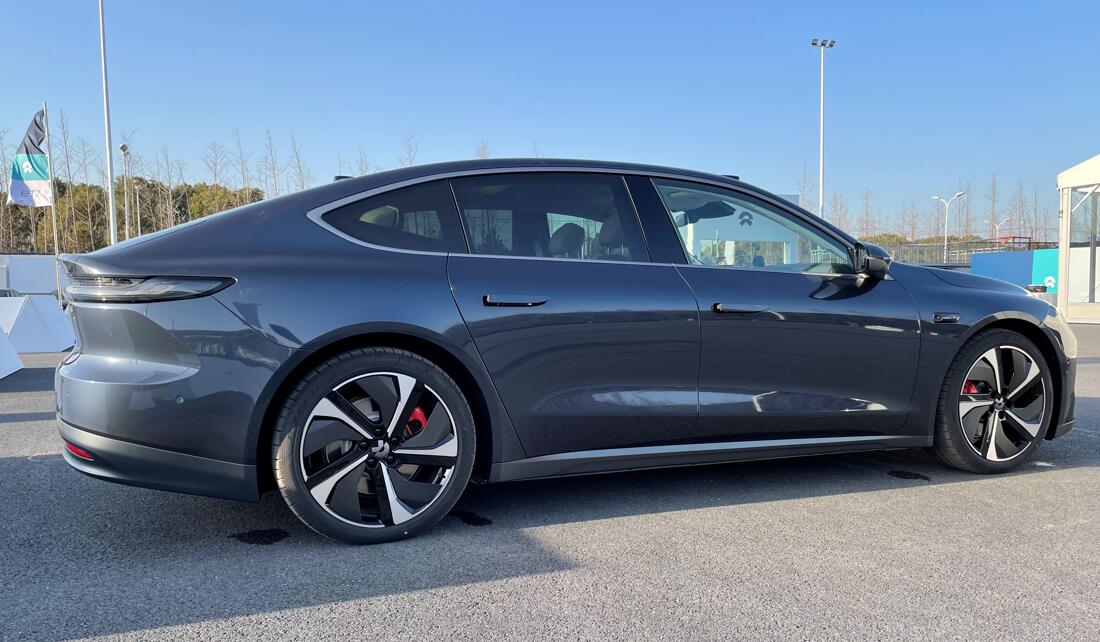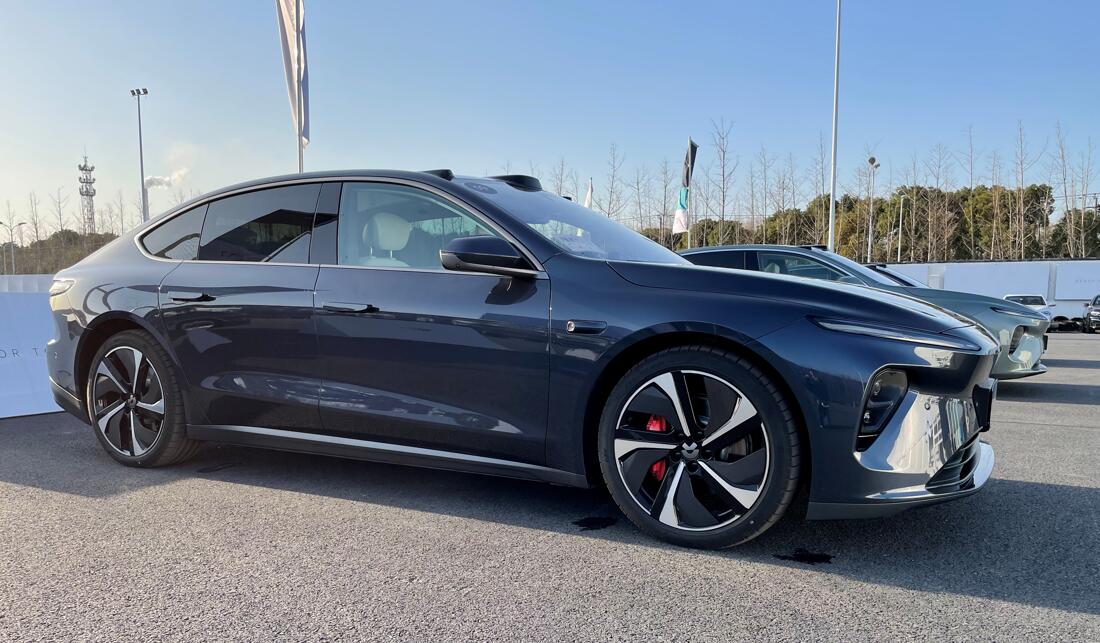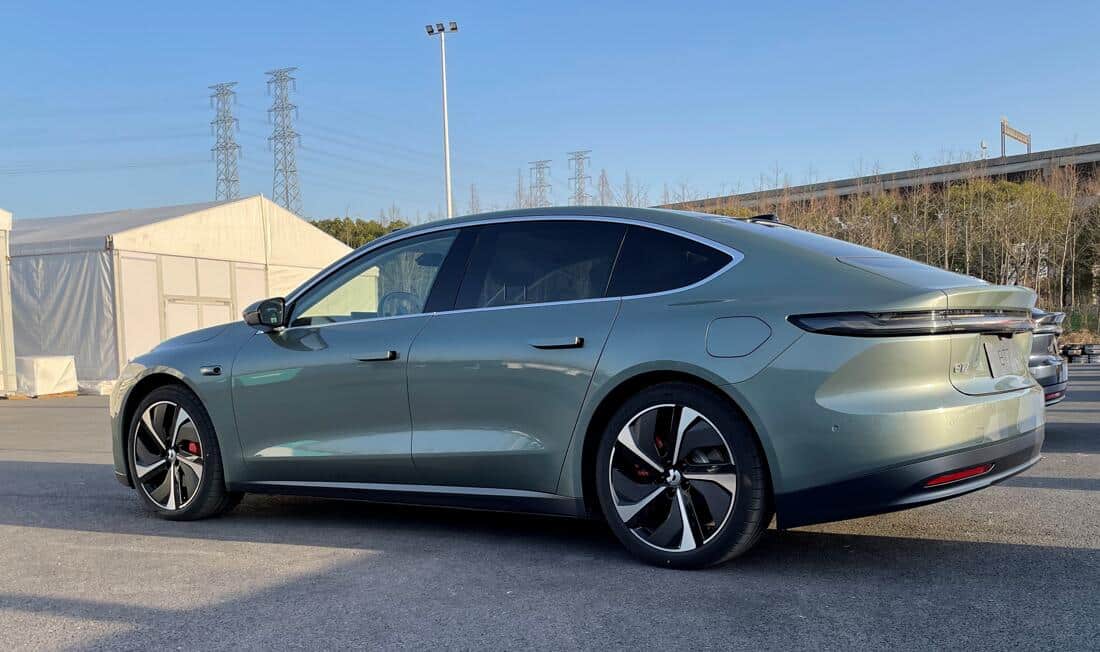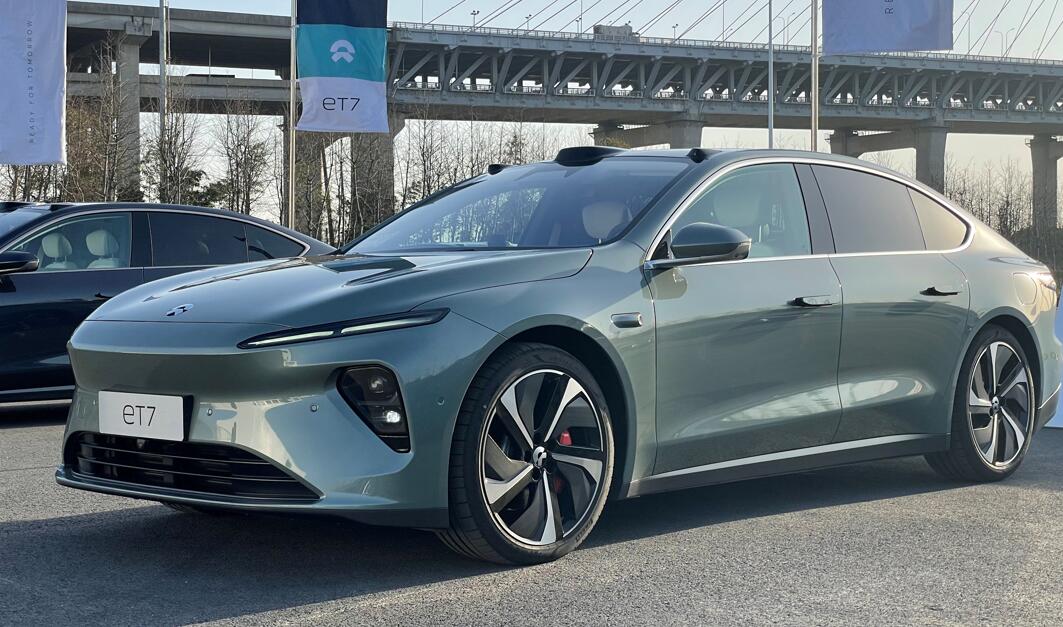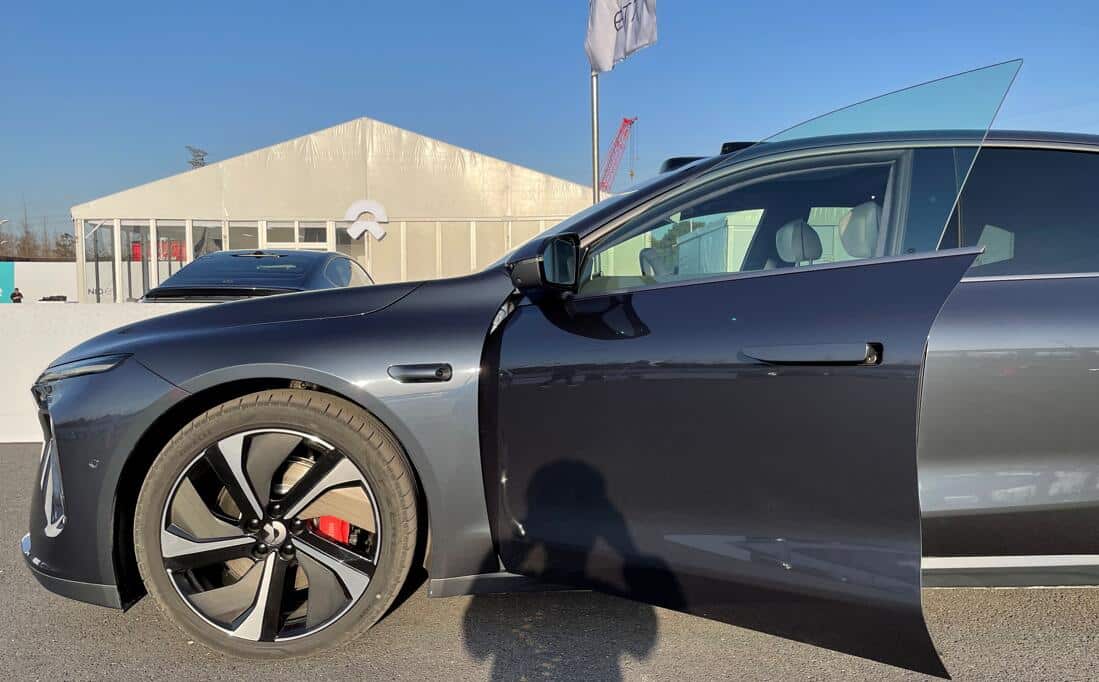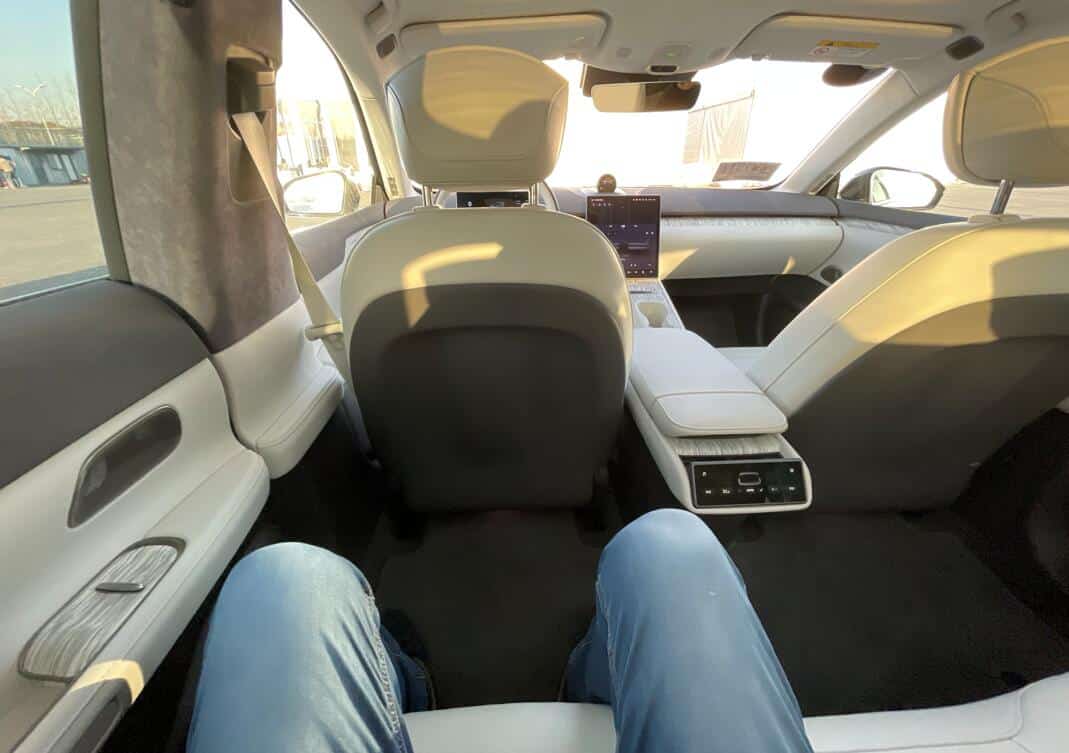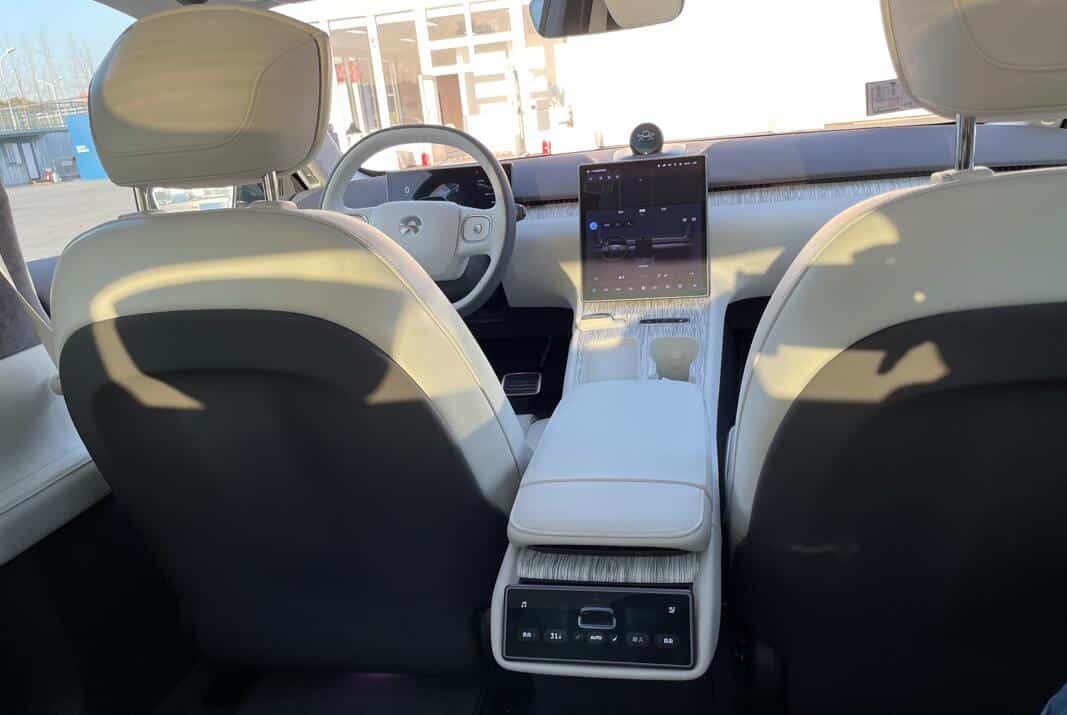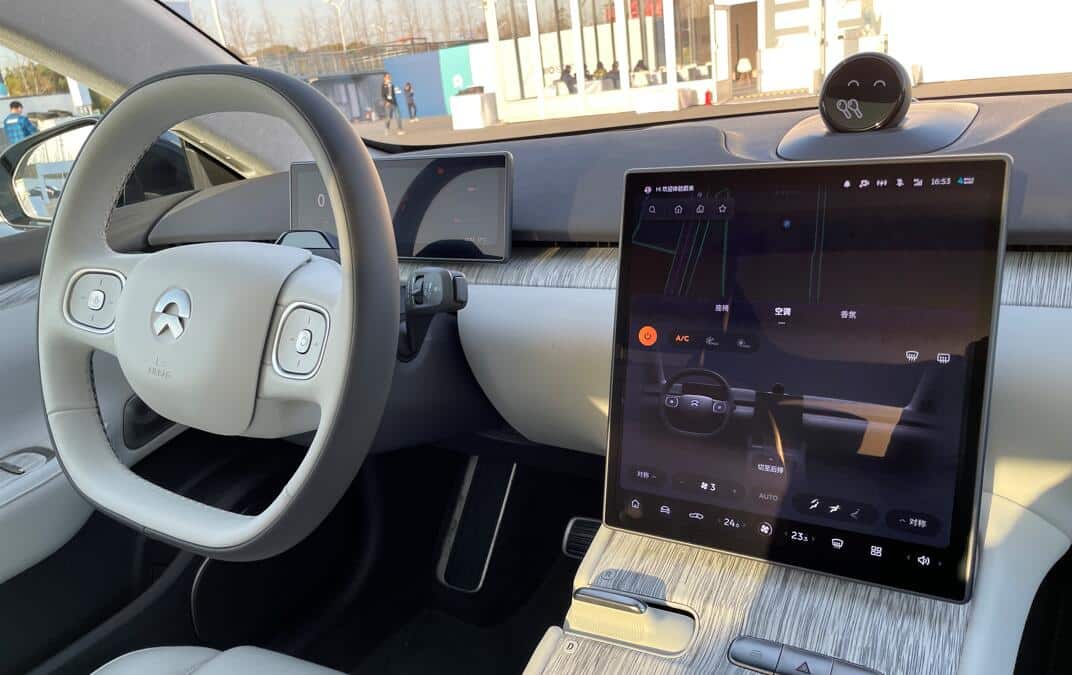The Nio ET7 is a luxury sedan that will compete with the BMW 5 Series and Mercedes-Benz E-Class models, but if users want to have fun driving, it delivers.
The author, Phate Zhang, is a Tesla Model 3 owner and the views expressed in this article are his own.
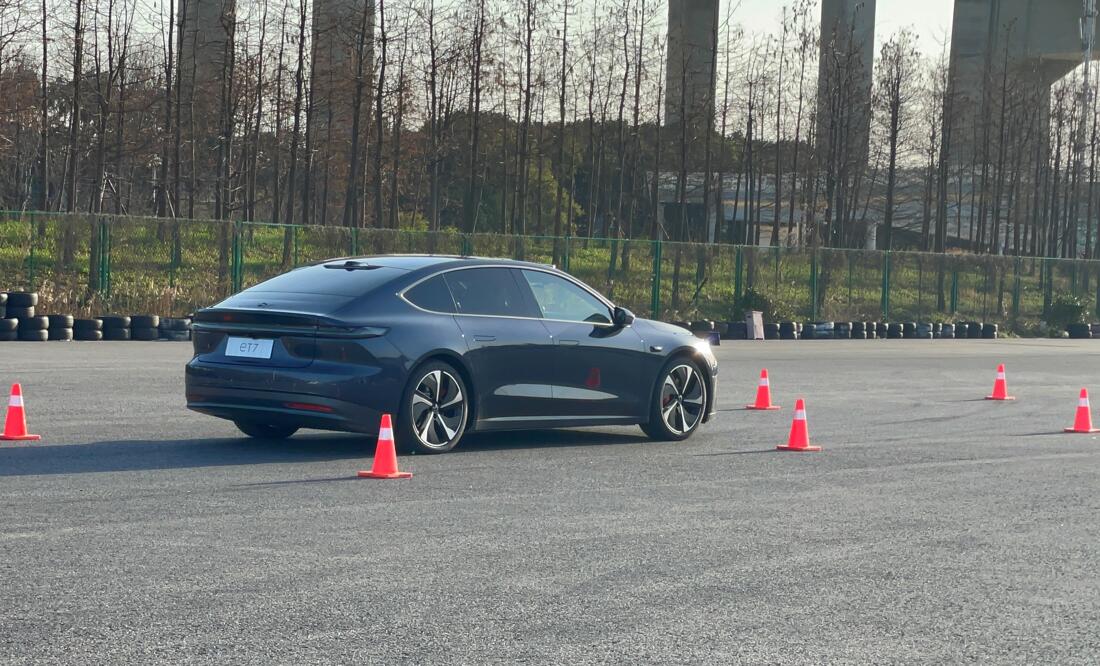
(Image credit: CnEVPost)
I am a Tesla Model 3 owner and I think it is one of the best driving experiences available to the average consumer at an affordable price.
After a brief test drive of the Nio ET7 on Wednesday, I found that great products always give similar satisfaction.
This is not to compare the Nio ET7 with the Model 3, which is obviously not in the same class, but to try to tell you how the ET7 is from the perspective of a Model 3 owner who enjoys driving.
Leading in the "arms race" of performance
Due to the dramatic change in mechanical structure, electric vehicles (EVs) usually have better acceleration and NVH (Noise, Vibration, Harshness) performance compared to fuel cars.
In the fuel car era, accelerating from 0 to 100 km/h in 7-8 seconds was considered excellent, while in the EV era, such performance is already considered lagging behind.
Although this performance has enabled users to have a good driving experience, there is no upper limit to the pursuit of "faster and better" by carmakers. So we see that EV makers are now trying to improve their acceleration performance like an arms race.
In the ET7, Nio achieves 0 to 100 km/h in 3.8 seconds at half load, which is ahead of most of the models currently available to the average consumer in China.
Before Wednesday's test drive, I was told that earlier that day a local automotive media outlet had accelerated the ET7 from 0 to 100 km/h in 3.6 seconds with no passengers on board.
The ET7 can achieve this kind of performance thanks to Nio's investment in R&D. Its motor division, XPT, has successfully developed the SiC chip that allows the ET7 to have Nio's highest performance motor to date, with a total power of 480 kW.
Nio's media-facing test drive was conducted at a closed venue in Shanghai, mainly to demonstrate the ET7's acceleration, braking and handling performance.
Before I started trying these tests, I first watched @JayinShanghai's test driving as a passenger.
I should have known that this kind of test is very intense driving and might make me motion sick. It really did, and it didn't take long for the ride to almost make me throw up.
On my test drive, I drove the ET7 at a more intense level than I did in the Model 3, but still couldn't drive like a professional car reviewer. I gave up, and producing that kind of review was not my intention.
My feeling is that this kind of intense driving condition is very rare for an owner to experience in daily driving. So I am more interested in how the ET7 performs in near-daily driving.
Multiple driving modes
Nio provides multiple driving modes for ET7: Sport+, Sport, Comfort, Energy Saving, and Custom.
In Sport+ mode, the ET7 can accelerate from 0 to 100 km/h in 3.8 seconds at half load, providing users with extremely high performance.
The acceleration time in Sport mode is 5.9 seconds, which is also an excellent performance among EVs.
In Comfort mode, the time is 7.9 seconds, which is mainly considered to make the ride more comfortable.
The acceleration time in Energy Saving mode is 9.9 seconds, and the main purpose is to reduce energy consumption.
In addition to these modes, Nio says the ET7 will also have a "Buddha" (佛系) mode, which is a Chinese expression that has only become popular in the past two years, meaning basically "whatever".
In this mode, the ET7's acceleration time is 12.9 seconds, which is comparable to a regular fuel-efficient car, and Nio says it is suitable for users to provide a comfortable experience when traveling with the whole family.
Although I enjoy driving, I set the Model 3's driving mode to the slowest acceleration to avoid the car going fast when I lightly press the accelerator pedal.
If I were to use the ET7 for daily driving, I would probably choose Comfort mode when driving by myself, or experience Sport mode occasionally.
Sport+ mode probably wouldn't be an option I would consider, and it probably would be the case for many other consumers. But for car companies, acceleration performance is the core indicator that must stay ahead of the curve, even if users don't use it.
If I were to take my family out, I would probably choose the "Buddha" mode to reduce their discomfort when riding.
Nio has a dedicated physical button for users to switch between modes, which is commendable because it makes it easy for people to quickly switch between the most suitable modes according to the car-using scenario.
During my short test drive, I was guided by Nio staff to switch from Sport+ mode to Comfort mode to experience the ET7's performance when passing through speed bumps.
Thanks to the ET7's air suspension, the body will automatically rise when switching to Comfort mode. The vibration when passing speed bumps in Comfort mode is significantly less than that in Sport+ mode.
Suspension and chassis
Nio's NT 1.0 platform-based SUVs have been complained by some users that their suspension system is "Schrödinger's air suspension", meaning that the system sometimes performs well, but sometimes performs poorly.
Nio has communicated with users about this and provided optimization. But it seems that the problem is mainly due to the high body height of SUVs, which makes the air suspension experience worse than in sedans.
When I experienced the ET7, I felt that the sedan did not have any unnecessary body shake and the chassis gave a very solid feeling after turning sharply and passing through speed bumps.
The one thing I didn't feel comfortable with during the experience was that the ET7's steering wheel was slightly larger than the Tesla Model 3, and I'm used to having a smaller one.
Interior
Nio wants to make the ET7 a "second living room" for users, so much of the interior design is based on this concept.
ET7 is equipped with frameless electric suction doors as standard and has an automatic pre-opening function, which makes opening and closing more elegant.
It uses a lot of renewable barnwood in the interior, which does bring a more innovative feel despite the possible high cost.
Nio also offers 256 colors of ambient lighting on the ET7, with the right overall tone, and I have not found it to have the potential to create light pollution in the car's cockpit.
The ET7's premium version comes with Nappa leather and is hand-stitched, and Nio says that only eight ET7 seats can be sewn per person per day.
The ET7 is 5,098 mm long, with a wheelbase of 3,060 mm, 1,505 mm high and 1,987 mm wide, which makes it very roomy, with far more space in the back than my Model 3's when the driver's seat is in its normal setting.
In addition to these very obvious features, the ET7's audio system is one of the features given the most praise by the local automotive press who experienced the car recently.
Nio says the ET7 comes standard with 23 speakers with a total of 1,000w and Dolby Atmos as standard, resulting in an immersive listening experience.
I personally am not a music lover, but the listening experience from so many speakers is indeed the best I know of in a car.
In addition, before the test drive, I had some doubts about the ET7 equipped with a vertically placed center screen similar to Nio's SUVs, worrying that it might not give the same experience as the horizontal setup of the Model 3.
But when I looked at it up close, I felt that this setup didn't seem to bother much. My attention was focused on the functionality the screen offered and didn't realize that this screen was different from the mainstream choices currently available from other car companies.
Of course, if the user interface is poorly designed or the screen resolution is very low, then it will be easily offensive to the user. The Nio ET7's AMOLED center screen has a resolution of 1,728*1,888 and 200ppi provides an excellent enough visual experience.
This is actually a reminder for readers considering a car purchase that it is difficult to judge whether a car is set up to your liking based on pictures on the internet alone. Before purchasing a car, personal experience is a must.
It is worth noting that the Nio ET7 has a suspended center control screen, which also makes it easier for possible future upgrades.
In addition to the traditional screen, the ET7 also supports AR/VR panoramic digital cockpit experience like the new sedan ET5 announced by Nio at the end of last year.
Here are more short videos I took at the site.

